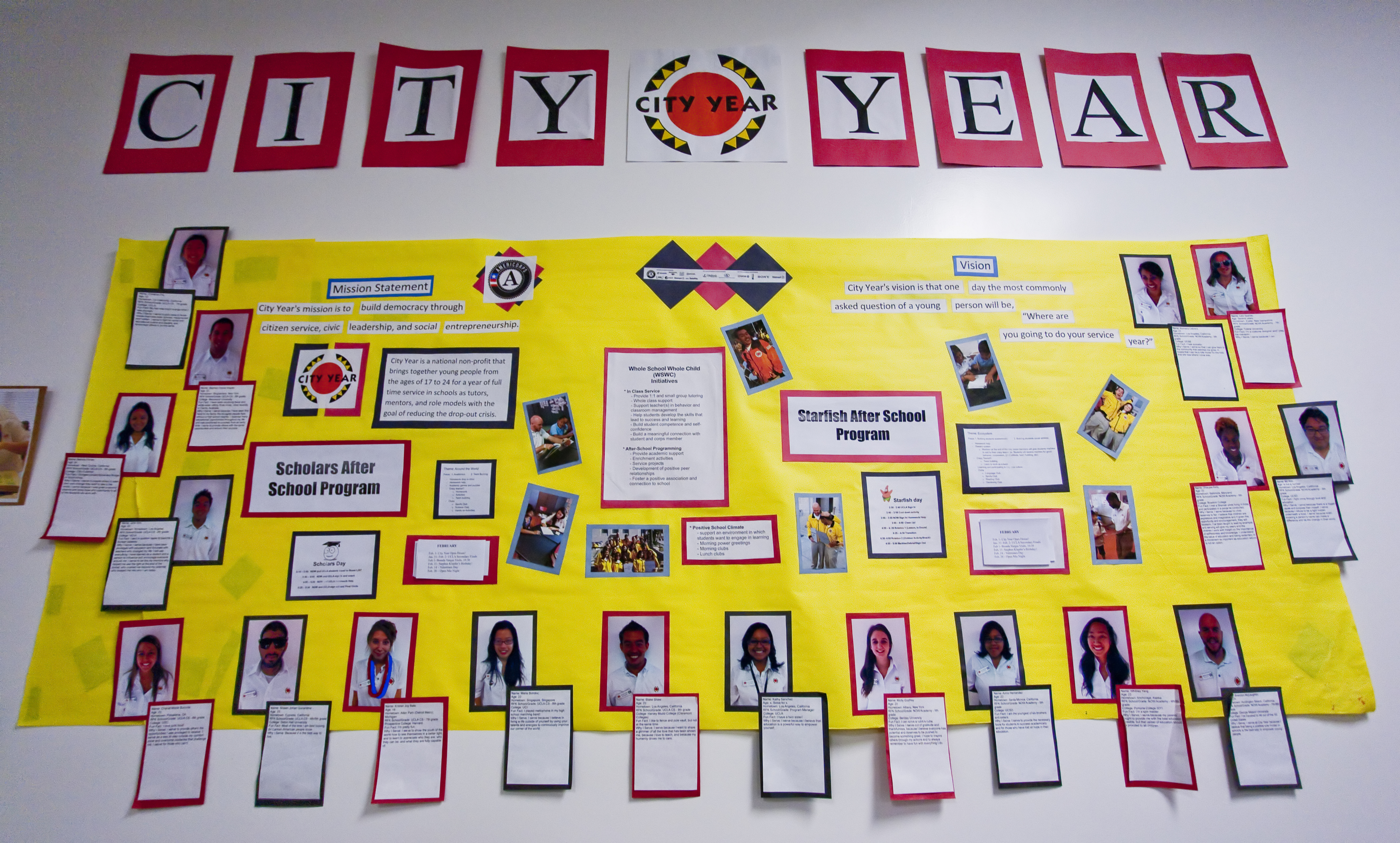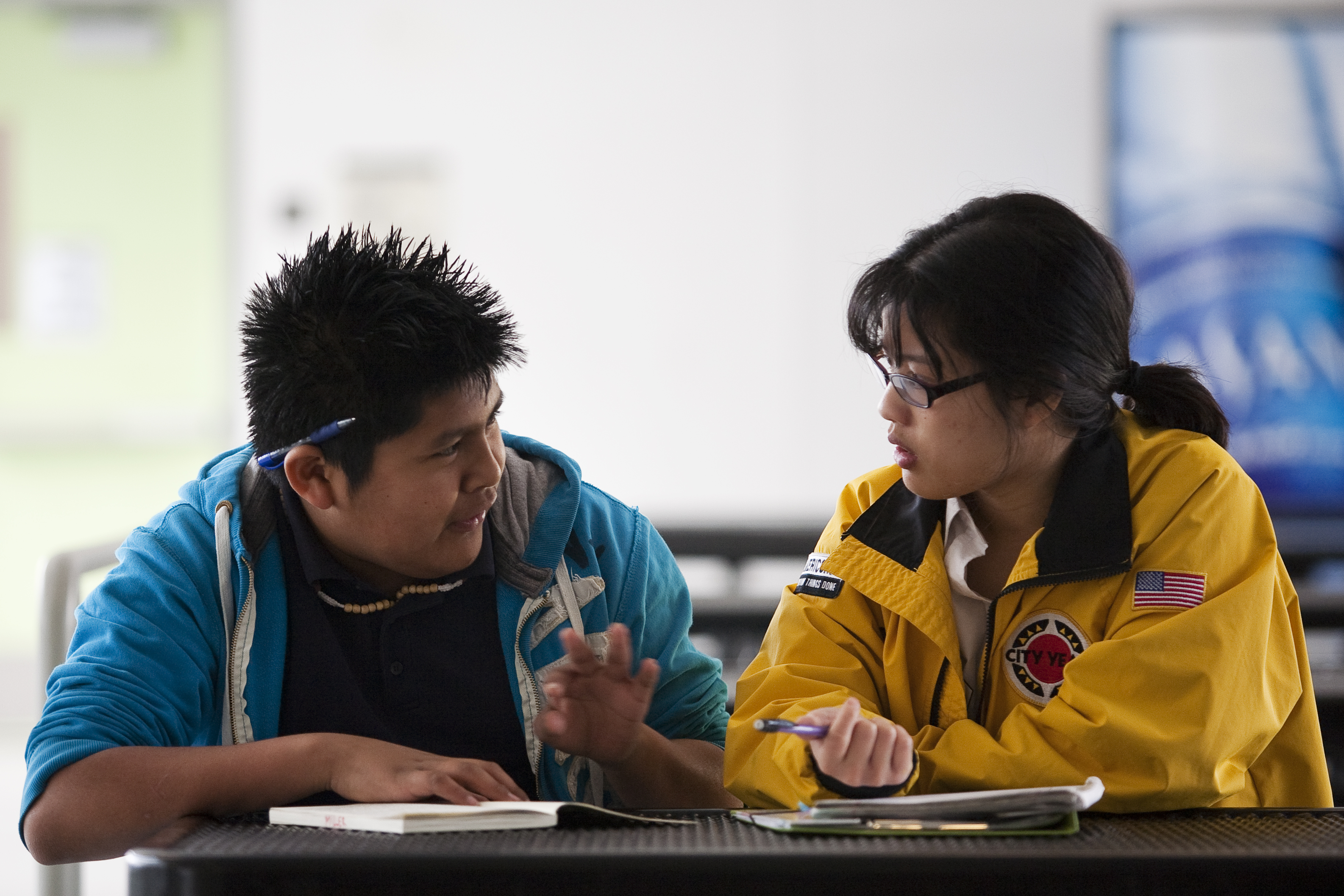
A board of City Year crew members is hung in a City Year classroom at the RFK community school.
Clarification: The original version of this article was unclear. Corps members receive a bi-weekly stipend, as well as health insurance, public transportation passes and a $5,550 Segal AmeriCorps Education Award that can be applied toward a college degree, graduate school, or existing student loans. In the 2010-11 academic year, 91 percent of the students that City Year members from the UCLA community worked with went from failing their classes to passing.
At 10 years old, John Kim risked becoming one of thousands of students who drop out of the Los Angeles Unified School District each year.
It was the mentorship of his fifth grade teacher that pushed him to not only graduate from high school but also eventually enroll at UCLA as a history student, Kim said.
After earning his degree in 2010, he now mentors elementary school students.
“When I wasn’t doing well in school, there was that teacher who really believed in me … and I want to be that same person,” Kim said.
Kim is one of 28 UCLA alumni with City Year, a nonprofit that places recent college graduates in classrooms with students at risk of dropping out. Members of City Year’s 2,000-person corps help students with homework, interact with them in the classroom and put on after-school programs.
Clad in their uniforms of a yellow jacket and boots, corps members serve as “near-peer mentors,” somewhere between the role of a teacher and a friend, said Phil Javellana, a senior brand and communications manager for City Year.
In the 2010-11 academic year, 91 percent of the students that City Year members from the UCLA community worked with went from failing their classes to passing, Javellana said.
UCLA is the largest feeder school for City Year, with more alumni in the program than any other university, said Brian Guerrero, associate director of the UCLA Career Center.
Last month, 56 UCLA students and alumni participated in a service event organized by City Year at the Los Angeles Academy Middle School, beautifying and revitalizing the campus.
City Year also places corps members in fifth through ninth grade classes at the UCLA Community School in downtown Los Angeles.
Kathy Sanchez, the program manager at the UCLA Community School and a UCLA alumnus, said she shares a past with many of the students at the school because she grew up in a low-income neighborhood in South Central Los Angeles.
In the United States, 12 percent of schools produce 50 percent of the dropouts, and most of these schools are in underprivileged areas, Javellana said.
“I came out of what all these kids came out of,” she said, adding she had mentors to encourage her to graduate from school.
While Sanchez said she was inspired by her past, some students volunteer to buy time while making career choices.
“I’m unsure what I’m going to do after college, and that’s a very scary thought,” said Kristina Bruno, a fourth-year international development studies student. “I like the idea of working for someone other than myself.”
Contributing a year to service constitutes giving up a year of earning income, but the service is rewarding, said Chariya Sok, a City Year corps member and 2011 UCLA alumna. Corps members receive a bi-weekly stipend, as well as health insurance, public transportation passes and a $5,550 Segal AmeriCorps Education Award that can be applied toward a college degree, graduate school, or existing student loans.
“When you actually go out in South L.A. (to volunteer), you see the struggles that these students are going through, you see the poverty line,” she said. “You’re learning at the same time as they’re learning.”
